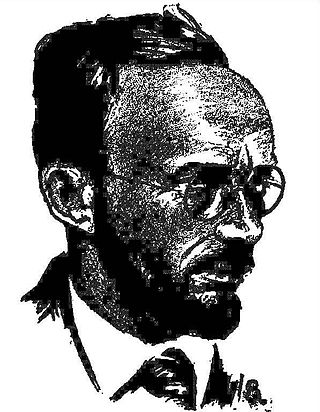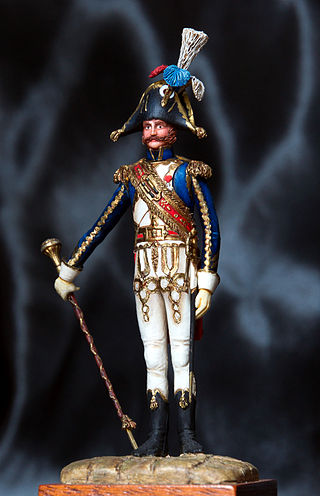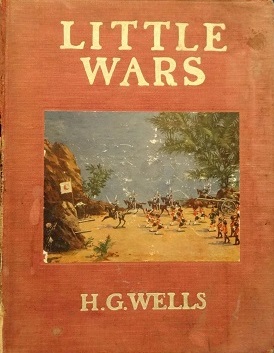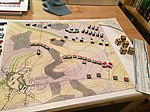
A wargame is a strategy game in which two or more players command opposing armed forces in a realistic simulation of an armed conflict. Wargaming may be played for recreation, to train military officers in the art of strategic thinking, or to study the nature of potential conflicts. Many wargames recreate specific historic battles, and can cover either whole wars, or any campaigns, battles, or lower-level engagements within them. Many simulate land combat, but there are wargames for naval and air combat as well.

Miniature wargaming is a form of wargaming in which military units are represented by miniature physical models on a model battlefield. The use of physical models to represent military units is in contrast to other tabletop wargames that use abstract pieces such as counters or blocks, or computer wargames which use virtual models. The primary benefit of using models is aesthetics, though in certain wargames the size and shape of the models can have practical consequences on how the match plays out.

A scale model is a physical model which is geometrically similar to an object. Scale models are generally smaller than large prototypes such as vehicles, buildings, or people; but may be larger than small prototypes such as anatomical structures or subatomic particles. Models built to the same scale as the prototype are called mockups.

A toy soldier is a miniature figurine that represents a soldier. The term applies to depictions of uniformed military personnel from all eras, and includes knights, cowboys, American Indians, pirates, samurai, and other subjects that involve combat-related themes. Toy soldiers vary from simple playthings to highly realistic and detailed models. The latter are of more recent development and are sometimes called model figures to distinguish them from traditional toy soldiers. Larger scale toys such as dolls and action figures may come in military uniforms, but they are not generally considered toy soldiers.

Murray Fletcher Pratt was an American writer of history, science fiction, and fantasy. He is best known for his works on naval history and the American Civil War and for fiction written with L. Sprague de Camp.

A model figure is a scale model representing a human, monster or other creature. Human figures may be either a generic figure of a type, a historical personage, or a fictional character.

Little Wars is a set of rules for playing with toy soldiers, written by English novelist H. G. Wells in 1913. The book, which had a full title of Little Wars: a game for boys from twelve years of age to one hundred and fifty and for that more intelligent sort of girl who likes boys' games and books, provided simple rules for miniature wargaming. Although first printed in 1913, an updated version was released in 2004.

Tactics is a board wargame published in 1954 by Avalon Hill as the company's first product. Although primitive by modern standards, it and its sequel, Tactics II, signalled the birth of modern board wargaming for the commercial market. Tactics is generally credited as being the first commercially successful board wargame.
Guidon Games produced board games and rulebooks for wargaming with miniatures, and in doing so influenced Tactical Studies Rules, the publisher of Dungeons & Dragons. The Guidon Games publishing imprint was the property of Lowrys Hobbies, a mail-order business owned by Don and Julie Lowry. About a dozen titles were released under the imprint from 1971 to 1973.

Donald F. Featherstone was a British author of more than forty books on wargaming and military history.
Tony Bath (1926–2000) was a British wargamer who favored the ancient period. He was the founder of the Society of Ancients.

Military simulations, also known informally as war games, are simulations in which theories of warfare can be tested and refined without the need for actual hostilities. Military simulations are seen as a useful way to develop tactical, strategical and doctrinal solutions, but critics argue that the conclusions drawn from such models are inherently flawed, due to the approximate nature of the models used. Many professional analysts object to the term wargames as this is generally taken to be referring to the civilian hobby, thus the preference for the term simulation.
The Society of Ancients (SoA) is an international, non-profit organization based in the UK that aims to promote interest in Ancient & Medieval history and wargaming, covering the periods from 3000BC to 1500AD.

A board wargame is a wargame with a set playing surface or board, as opposed to being played on a computer or in a more free-form playing area as in miniatures games. The modern, commercial wargaming hobby developed in 1954 following the publication and commercial success of Tactics. The board wargaming hobby continues to enjoy a sizeable following, with a number of game publishers and gaming conventions dedicated to the hobby both in the English-speaking world and further afield.

Albert A. Nofi, is an American military historian, defense analyst, and designer of board and computer wargaming systems.
Phil Barker is one of the major figures in the development of the modern hobby of tabletop wargaming, particularly that of ancient warfare, and is a co-founder of the Wargames Research Group.

Paddy Griffith was a British military theorist and historian, who authored numerous books in the field of War Studies. He was also a wargame designer for the UK Ministry of Defence, and a leading figure in the wargaming community.

The Crimean War Research Society (CWRS) is an international society of professional and amateur historians who research the Crimean War of 1854–56. The Society aims to bring previously unpublished or under-researched material concerning the Crimean War to the attention of a wider audience, together with making it available to present and future historians. It publishes a quarterly journal, The War Correspondent.

A wargame, generally, is a type of strategy game which realistically simulates warfare. A professional wargame, specifically, is a wargame that is used by military organizations to train officers in tactical and strategic decision-making, to test new tactics and strategies, or to predict trends in future conflicts. This is in contrast to recreational wargames, which are designed for fun and competition.

A wargame is a strategy game that realistically simulates warfare. Wargames were invented for the purpose of training military officers, but they eventually caught on in civilian circles, played recreationally.














